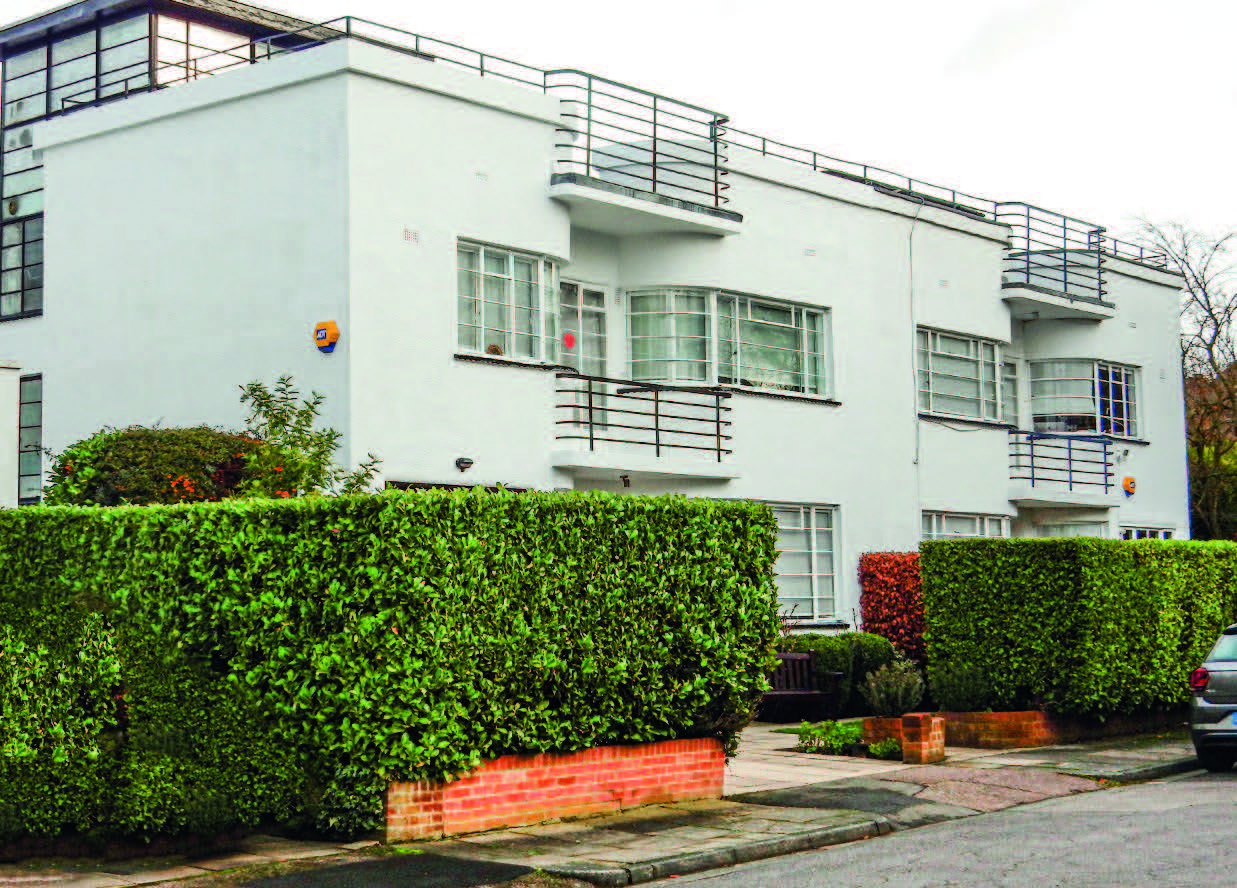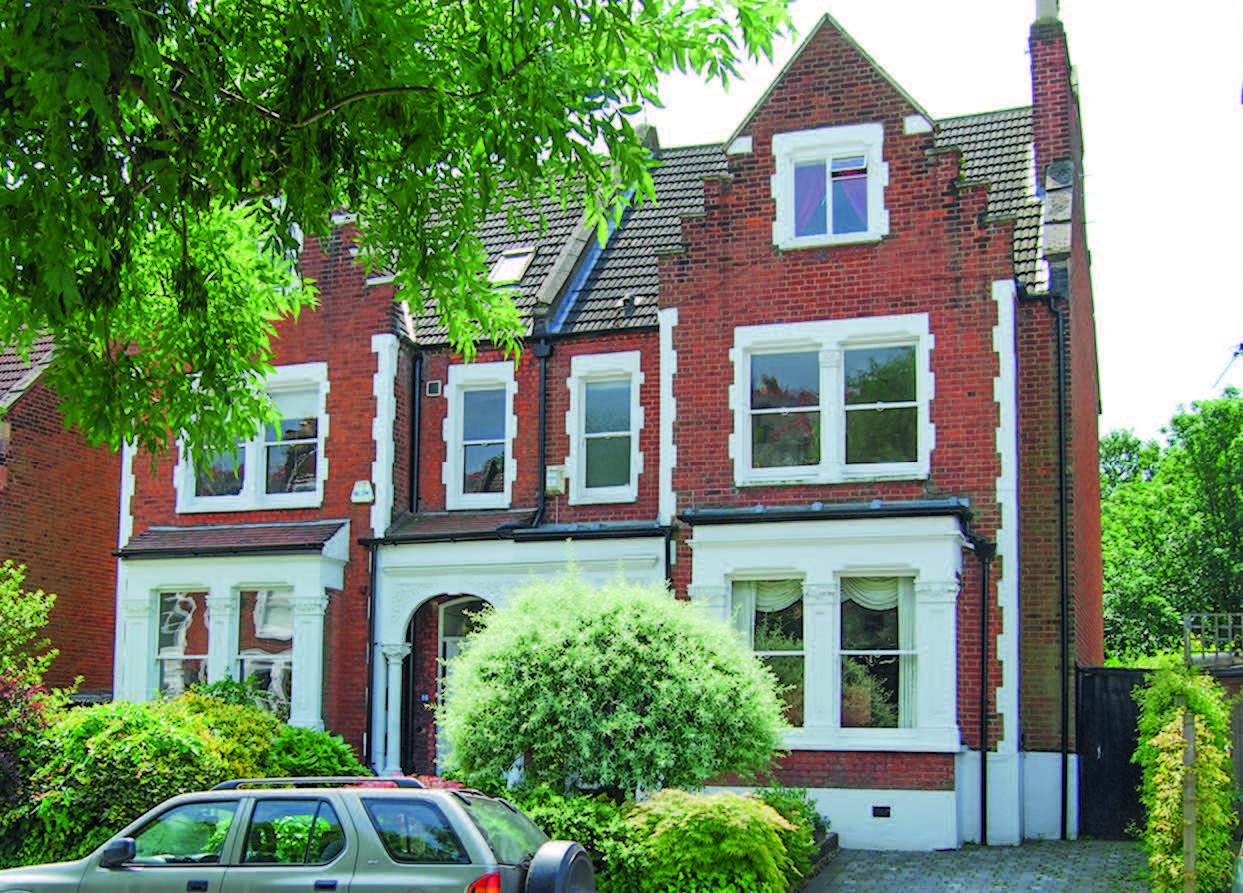
Styles
Our northern heights are blessed with a fine variety of domestic architecture.
Georgian, in Highgate Village’s The Grove (above), probably represents one of the most valuable styles today, with many examples dating back as far as 1688. The rich and famous have enjoyed this historical village location over the millennia – along with the distant views over the Heath behind.
In contrast, the later Art Deco, modernist and internationalist styles are well represented. Above right is a much admired 1930’s example (architect G G Winbourne) in Hampstead Garden Suburb, not far from one of the country’s most valuable roads, The Bishops Avenue – evolved from the classic turn of the century English mansion style to today’s unruly mix of styles reflecting international owners in search of a prestige London address.
With the coming of the railways in the mid-19th century, the developers and their terraces followed. Below right is a fine example in Onslow Gardens, bordering the Woodlands that were protected from the aforesaid developers for our enjoyment today. The train station, replaced now by Highgate Underground Station underneath, is but a short walk away for residents on this side of Muswell Hill.
The Gothic style, revived by the Victorians to represent the good and righteous establishment, became a popular style for their buildings, banks, and of course our Parliament.
Its influence was often incorporated into our domestic architecture too, no more so than by Angela Burdett-Coutts in her 1860 Holly Village (below), next door to Highgate Cemetery which includes the remains of the talented and influential - and Karl Marx


To the right, St Mary’s church tower must be one of our oldest remaining styles - 13th Century if not earlier, and bottom, Regency symmetry and elegance can be found on North Road, Highgate Village.




The surveyors George and John Pricketts' 17th century residence is a perfect example of Queen Anne style. Apart from being on the site of The Bear Inn, the earlier history is apparently not known.
Local commercial developers were much influenced by the styles of their day. The Arts & Crafts movement was one such incorporated into the landscape as we entered the 20th Century. The ironwork on Leaside Mansions shows W. J. Collins’s enthusiasm for Charles Rennie Mackintosh, and below right is W.B. Collins’s design for flats built on the site of their family home – Rookfield House.



